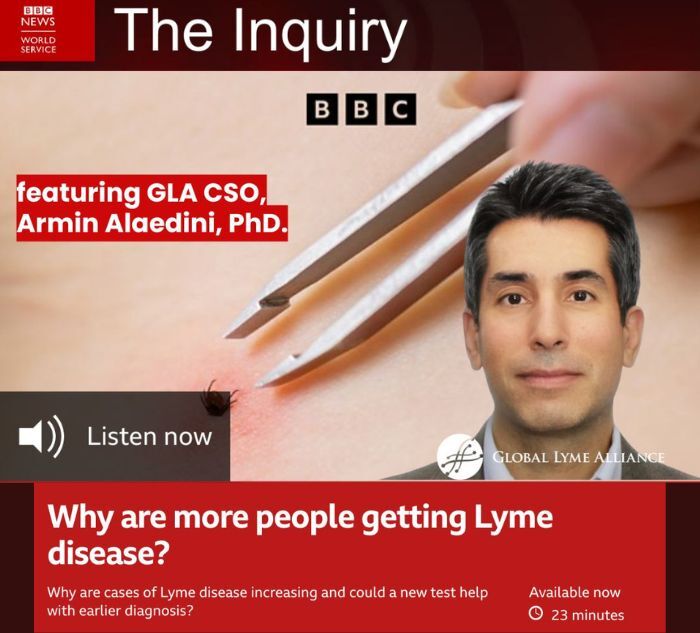
Learn how to tailor mindfulness practices to your unique health needs, especially when living with chronic illnesses like Lyme disease.
As we rush through the holiday season and contend with chaos in our lives and the world, we’re often encouraged to practice mindfulness. Simply put, mindfulness is a way to be fully present in the moment rather than consumed with thoughts, worries, or tasks. It’s a way to practice awareness and to pause. There are lots of different ways to practice mindfulness, from yoga to breathing exercises to meditation. Theoretically, mindfulness is a way to quiet our minds, calm our bodies, and get the two working in sync.
I say theoretically because while mindfulness sounds great in principle, as a patient of late-stage neurological tick-borne illness, it hasn’t always been so calming for me in practice. In fact, at times, attempting to be mindful has actually exacerbated rather than quelled some of my symptoms. This isn’t to dismiss mindfulness. Overall, I think it’s a wonderful concept that helps many people ground themselves and can even ease anxiety and depression. The key, though, is figuring out which mindfulness practices work for you.
When I was at my sickest with Lyme disease, babesiosis, ehrlichiosis, Epstein-Barr virus, and possible bartonella, I was bedridden. My joints ached, I felt shackled by fatigue, and I suffered migraine headaches. Because the infections had crossed my blood-brain barrier in to my central nervous system, I had neurological symptoms like sleep disturbances, brain fog, neuropathy, burning extremities, and word and song iteration. While my body was in park, my mind raced. Despite my exhaustion, I couldn’t rest.
Mindfulness was a natural suggestion. After weeks of needing to nap but not being able to quiet my mind enough to do so, I tried a guided meditation. The exercise was similar to a “conscious relaxation” technique I’d learned in high school, where someone guides you through focusing on and relaxing every part of your body, from your scalp to your toes.
In my healthier days, this technique had indeed relaxed me to the point where it was difficult to get up and go to my next class. As an adult with neurological illness, guided meditation sent my nervous system into overdrive. I followed all the instructions. But I barely got to attempting to relax my chin before my whole body started twitching. The sound of the guide’s voice, meant to be soothing, grated like nails on a chalkboard. The thoughts and words and ideas and song lyrics flying around my brain did not diminish; they got louder, the meditation instructions yet another layer for my overloaded sensorium to process. Needless to say, meditation was not right for me at that time.
I tried yoga. That, too, was too much. Poses that seemed easy or calming for healthy people sent my body into post-exertional malaise. My aches increased. I’d always been an overachiever, and so even with mindfulness practices, I pushed my body and brain to try more than they were yet capable of. But until antibiotics killed enough spirochetes, pushing myself only made me feel worse.
Ultimately, I had to realize that part of managing chronic illness was meeting my body where it was at a given moment. I had to learn to pace myself and to take baby steps with everything from living independently to exercising. When I started physical therapy a second time, I didn’t jump right onto a bike; I did a small centering exercise, tracing a yin yang symbol with my finger. Eventually, I worked up to working all of my fingers, and then to using light elastic pulleys, and then to riding a minute on a stationary bike. Now, I can ski several days in a row.
I realized that I could start small with mindfulness practices, too, so that they became helpful rather than harmful adjunct therapy. Instead of jumping right into a full yoga practice, I tried gentle sitting yoga for people with chronic illness. I did short deep breathing exercises. I stretched. I took five-minute pauses to notice what I saw, heard, tasted, smelled, and felt. I wrote those observations down and worked them into my writing practice.
Mindfulness is meant to be slow and deliberate, and I have slowly and deliberately figured out which practices—mindfulness and otherwise—help my overall health. Guided meditation still isn’t one of them. When I try it now, I’m triggered, reminded of my reaction many years ago. And so I’ve learned and accepted that particular practice isn’t for me. Part of mindfulness is not judging any thoughts that come your way as you’re trying to be present; I’ve learned to not judge any needs I have when it comes to my health, including what does or does not work for me.
If you’re feeling like you “should” practice mindfulness but aren’t up for it, maybe all you need is rest right now. Perhaps you’re so focused on the present—feeling sick—that what you really need is distraction. That’s okay. Meet yourself wherever you are.
If you do think that mindfulness can help ground you, don’t feel that you have to jump right into a large practice. Start small, see how different practices make you feel, and know that like any practice, mindfulness can be built up over time.
***

Jennifer Crystal
Writer
Opinions expressed by contributors are their own. Jennifer Crystal is a writer and educator in Boston. Her work has appeared in local and national publications including Harvard Health Publishing and The Boston Globe. As a GLA columnist for over six years, her work on GLA.org has received mention in publications such as The New Yorker, weatherchannel.com, CQ Researcher, and ProHealth.com. Jennifer is a patient advocate who has dealt with chronic illness, including Lyme and other tick-borne infections. Her memoir, One Tick Stopped the Clock, was published by Legacy Book Press in 2024. Ten percent of proceeds from the book will go to Global Lyme Alliance. Contact her via email below.







